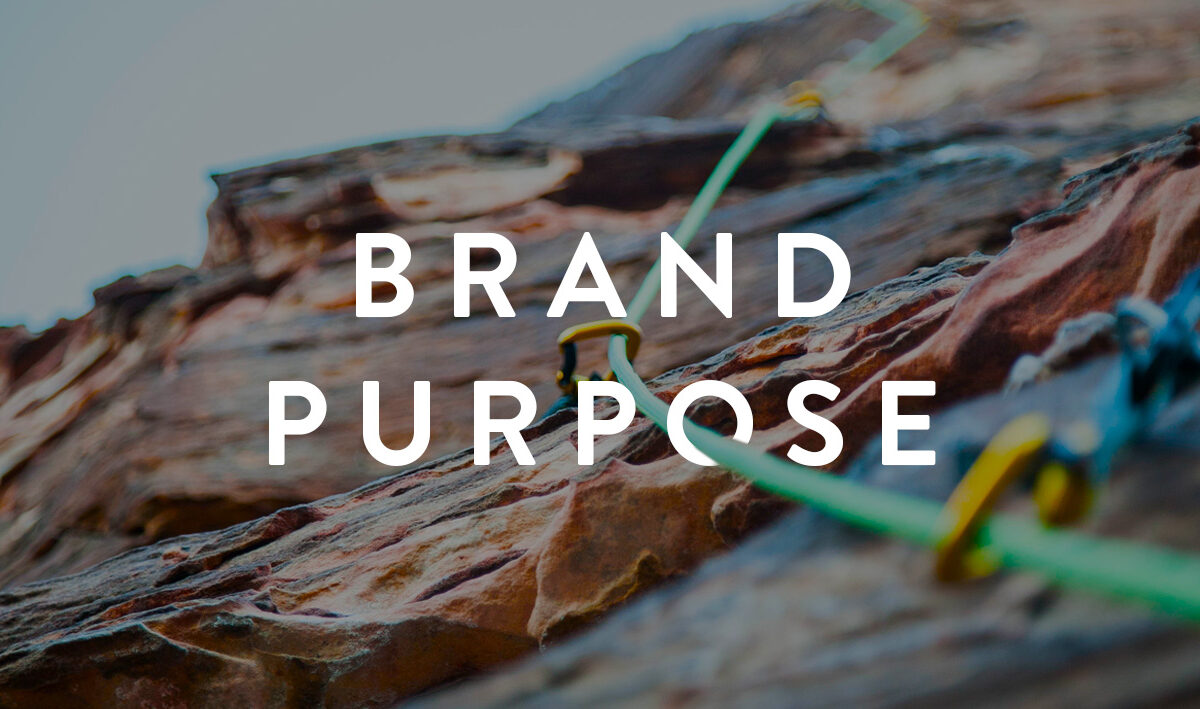“Brand that I can trust” has been an attribute that brands have measured for a long time. Looking back, a decade ago, it was hardly a differentiator. Strangely, all mass competing brands would score high so we never spent too much on it. Why? I believe, back then, it meant something different – it meant reputation of the brand and acceptable product quality. In other words, is it a safe purchase or not? However, this attribute has taken a new meaning in today’s day & age especially with Gen Z starting to enter the workforce. Roughly 81% of Edelman’s respondents say that they “Trust the Brand to do the right thing”. It is no longer about the product and brand name (I mean it sure is but it is not enough on its own) people need brands to take a stance on social issues and put their money where their mouth is. The days of inauthentic, check-box support or fancy CSR initiatives are long gone. People are demanding a consistent approach.
Brand Purpose = Competitive Advantage
Since trust is built over time and can be broken overnight, it is a very fragile attribute for a brand. For the brands born in the last decade, it is the single most powerful long-term competitive advantage they can build and are building by putting social purpose in their core DNA. Significant advancements in tech and social media can enable a 1-on-1 connection at scale with brand advocates.
If you are thinking of launching a brand, ensure that it is clear what you want to stand for and build it at the core of your brand ethos. It is, however, easier said than done to find a meaningful social purpose for a scaled brand and then to become associated with it. Majority of the large brands today were born decades ago. Consumers’ perception doesn’t change overnight. Building a social purpose takes a strong belief that’s authentic to the brand, tenacity, and financial resources for consistent messaging. Moreover, it must feel right for your product category and drive overall business revenue as well.
Some large brands that have consistently delivered on this agenda are Nike, Starbucks and Target. Nike’s commercials have consistently made a social statement in ways that creates a positive conversation. By doing so, they are able to tap into a progressive consumer mindset creating a positive brand affiliation. Starbucks with voicing their opinions on social injustice and creating their cafes as a place to commune about ideas. The longer the customers stay, the more they love the brand and the more customer lifetime value Starbucks builds. Target creating plus size model imagery and clothing is as much doing the right thing (an inclusive message) as it is about tapping into a larger target audience. Often when a social purpose is identified for a legacy brand, it remains as an add-on topical message. Because the link to revenue is not always clear, the idea fails to get any meaningful internal stakeholder support creating a vicious cycle of staying revenue focused which we know is not the best way to drive growth today. So, what should we do to define our brand purpose and address this trust crisis that we are dealing with right now?
Go Back To Go Forward
Going back to our roots helps. Dig deep into our brand DNA. Why was our brand founded? What has been the underlying truth that made our brand resonate through decades? How has this diluted over time? Who are we targeting? Who do we want to target today? What matters most to them? How does our brand DNA help address what matters to our people? Once you define the “why” of your brand, “who” you are targeting, the “how” – social purpose – will become obvious. When it feels authentic to your brand, the execution will follow. If the execution is effortless to your brand, revenue will follow. To gain traction with consumers, start small and fine tune ideas and then scale as it resonates.
In my role as VP of Marketing at Luxury Division for Revlon, we are looking at ways to re-engage with the consumers for all of our brands. For instance, at Elizabeth Arden, we often go back to our founder. Name sake, Elizabeth Arden was a pioneer in the beauty industry. She was on the Time Magazine cover when women didn’t have the right to vote! She walked with the suffragette women. Gave out red lipsticks which then became synonymous with women’s liberation. (Keep in mind that at that time wearing lipstick was not commonplace for middle class women). This story really inspires us about our brand. (Conveniently, it sits well with one of our product categories). Earlier this year we partnered with I am a Voter to encourage women/people to vote. Of course, Covid-19 slowed us down in our rollout but we feel that it is the right place for us to be. Small steps now will hopefully lead us to a big movement later.
Contributed to Branding Strategy Insider by: Oshiya Savur, VP of Marketing, Luxury Division, Revlon
At The Blake Project we are helping clients from around the world, in all stages of development, redefine and articulate what makes them competitive at critical moments of change. Please email us for more.
Branding Strategy Insider is a service of The Blake Project: A strategic brand consultancy specializing in Brand Research, Brand Strategy, Brand Growth and Brand Education




